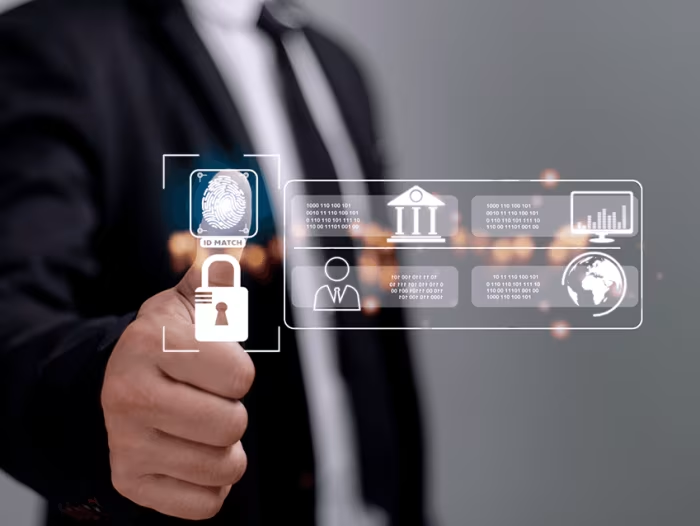Resource / Online Journal
What is IGA and Why is it Important for Effective Security Management?
Understand what IGA is and why is it essential for modern enterprises to secure identities, manage access, and meet growing compliance demands efficiently.
Published on Apr 30, 2025

What Is IGA and Why Is it Important?
Cyber threats escalate in complexity and scale, nearly half of data breaches stem from excessive permissions and unauthorized access. Effective identity management not only protects sensitive data but also supports operational efficiency and trust across digital ecosystems.
Identity Governance and Administration (IGA) is a strategic approach that integrates identity lifecycle management with access governance. IGA ensures that the right individuals have appropriate access at the right times, aligning with security policies and compliance needs.
This blog dives into what IGA is, why it’s essential in a connected, cloud-driven world, and how it strengthens an organization’s security posture. From minimizing cyber risks to improving regulatory compliance, IGA plays a key role in enabling secure, scalable identity and access management for today’s digital-first enterprises.
What is Identity Governance and Administration (IGA)?
Identity Governance and Administration (IGA) is a framework that helps organizations control who has access to resources, ensuring the right people have the right access at the right time. In simple terms, IGA ensures that employees and other users can access the systems and data they need for their work while protecting sensitive information and meeting compliance requirements. IGA consists of two core components:
Identity Governance focuses on setting policies, ensuring compliance, and maintaining visibility into who has access to what. It involves defining access rules, regularly reviewing user permissions, and generating reports for audits. Governance ensures that access is aligned with internal policies and external regulations, helping prevent unauthorized access and keeping organizations compliant.
Identity Administration manages the practical aspects of user identities. This includes provisioning (granting) and deprovisioning (removing) access when employees join, leave, or change roles, as well as handling access requests. By automating these processes, IGA reduces errors and streamlines onboarding and offboarding.
IGA sits at the intersection of IT operations and security, balancing business productivity with protection of critical assets. By combining governance and administration, IGA offers a unified approach to managing digital identities, ensuring operational efficiency and robust security.
3. Key Functions of IGA
IGA at its core strengthens security, improves compliance, and simplifies user access management by automating key identity-related functions.
1. Provisioning & Deprovisioning Access
As previously mentioned, this function guarantees that employees receive appropriate access upon joining, changing roles, or departing from an organization. For example, when a new hire in finance joins, they’re automatically granted access to payroll systems but not customer databases. Similarly, when they leave, access is removed promptly, reducing the risk of unauthorized access.
2. Access Reviews and Certification
Periodic reviews ensure users still need the access they have. Managers are prompted to verify if their team members still require existing permissions, reducing the risk of unnecessary access accumulation.
3. Role Management
Instead of assigning access individually, IGA uses roles (like “HR Manager” or “Sales Associate”) to group common access rights. This reduces manual work and errors while maintaining consistency.
4. Policy Enforcement
IGA enforces security policies like segregation of duties (SoD). For example, it ensures one user can’t both approve and create vendor payments, helping to prevent fraud.
5. Audit and Compliance Reporting
IGA systems maintain logs of who accessed what and when. This makes it easier to respond to audits and demonstrate compliance with regulations like GDPR or HIPAA. Together, these functions give organizations visibility and control over digital identities, making it easier to protect sensitive information and respond to changing business needs.
Why is IGA Important for Security Management?
1. Restricting Unauthorized Access
IGA enables automated access provisioning and deprovisioning, ensuring that only authorized individuals have access to private data. This reduces risk of privilege creep and access lingering after role changes or departures, common sources of security breaches.
2. Supporting Least Privilege
By managing access through attribute and role-based access control (ABAC and RBAC), IGA enforces least-privilege policies. It ensures users only access what they absolutely need to do their jobs, minimizing the potential attack surface.
3. Ensuring Regulatory Compliance
Maintaining regulatory compliance like GDPR, HIPAA, and SOX, helps maintain compliance and has become a top security priority. IGA automates access reviews, documents justifications, and generates audit-ready reports freeing security teams from the inefficiencies and risks of manual compliance processes.
4. Enhancing Visibility and Control
IGA provides a centralized view of user access across all systems, allowing real-time oversight and faster detection of irregularities. This unified visibility helps identify gaps, flag risky access combinations, and prevent insider threats or human error.
5. Streamlining Audits and Incident Response
From onboarding to offboarding, every access event is logged and traceable. If you're facing a routine audit or responding to a breach, IGA lets you quickly pull reports, validate policies, and demonstrate control without the need for time-consuming manual record collection.
Common Challenges Without Identity Governance Administration (IGA)
Leveraging IGA offers key benefits, while organizations without it face significant access-related challenges that compromise security and compliance. Manual access controls are inherently error-prone and time-consuming, leading to incomplete reviews and overlooked permissions. IT teams often struggle to revoke access promptly when employees leave or change roles, resulting in orphaned accounts and elevated security risks.
Without centralized visibility, it becomes difficult to determine who has access to what, increasing the chances of privilege misuse or insider threats. Manual processes also make it harder to maintain consistent, auditable records complicating efforts to comply with regulations like GDPR, HIPAA, and SOX. This lack of documentation often results in audit failures and penalties. In growing or dynamic environments, these challenges only intensify. Manual methods cannot scale or adapt to changing roles, applications, and compliance standards, leaving organizations exposed and unprepared for modern security demands.
IGA vs Identity and Access Management: What's the Difference?
Identity and Access Management (IAM) and Identity Governance and Administration (IGA) are closely related but serve distinct purposes. IAM focuses on controlling access managing user authentication, authorization, and ensuring the right individuals can access the right systems. It handles the operational side of identity security. IGA, on the other hand, is about governing access. It adds oversight, policy enforcement, compliance management, and identity lifecycle processes to IAM’s core functions. While IAM decides who can access, IGA ensures that access is appropriate, documented, and auditable.
Together, IAM and IGA form a complete identity security framework. For example, in healthcare organization if an employee joins IAM authenticates the user and grants access to systems like the EHR based on their role. IGA ensures the access is appropriate by enforcing approval workflows, running access reviews, and maintaining audit logs for HIPAA compliance. IGA complements IAM by bringing visibility, automation, and governance across all user access activities.
Conclusion: Building Security with IGA
Identity Governance and Administration (IGA) plays a vital role in strengthening an organization’s overall security posture. Importantly, IGA tools is not just for large enterprises. Organizations of all sizes face identity-related risks and implementing governance early can help prevent security gaps before they grow. With today’s hybrid environments and increasing regulatory demands, manual identity management is no longer sustainable.
IGA shifts the focus from treating identity as a one-time IT task to a continuous, strategic security function. It empowers organizations to view identity as a foundational layer of security one that must be governed just as rigorously as networks or data. In doing so, IGA helps build a resilient, compliant, and future-ready security framework.
Recommended articles


Identity Governance and Administration (IGA): Best Practices for a Secure Workforce
Take Your Identity Strategy
to the Next Level
Strengthen your organization's digital identity for a secure and worry-free tomorrow. Kickstart the journey with a complimentary consultation to explore personalized solutions.